Kathmandu stands as a cultural capital that effortlessly marries the past with the present. Visitors often find themselves enchanted by its bustling streets, where the aroma of traditional Newari cuisine mingles with the sounds of artisans crafting intricate woodwork. A friend once shared how wandering through Bhaktapur Durbar Square felt like stepping into a living museum, filled with history and vibrant life. Yet, what truly makes Kathmandu unique are the hidden stories behind its UNESCO World Heritage Sites. Uncovering these layers reveals a city that’s much more than meets the eye—there’s a captivating journey waiting to be explored.
Key Points

- Kathmandu’s rich history blends ancient traditions with modern influences, showcasing its significance as a cultural capital of Nepal.
- The city is home to several UNESCO World Heritage Sites, each reflecting unique aspects of Nepal’s diverse heritage.
- Local festivals like Indra Jatra and Dashain highlight Kathmandu’s vibrant cultural celebrations and community spirit.
- Traditional Newari craftsmanship and culinary delights, such as momos and Juju Dhau, enrich the city’s cultural landscape.
- Engaging with local customs, art, and festivals deepens visitors’ understanding of Kathmandu’s heritage and traditions.
Historical Significance of Kathmandu
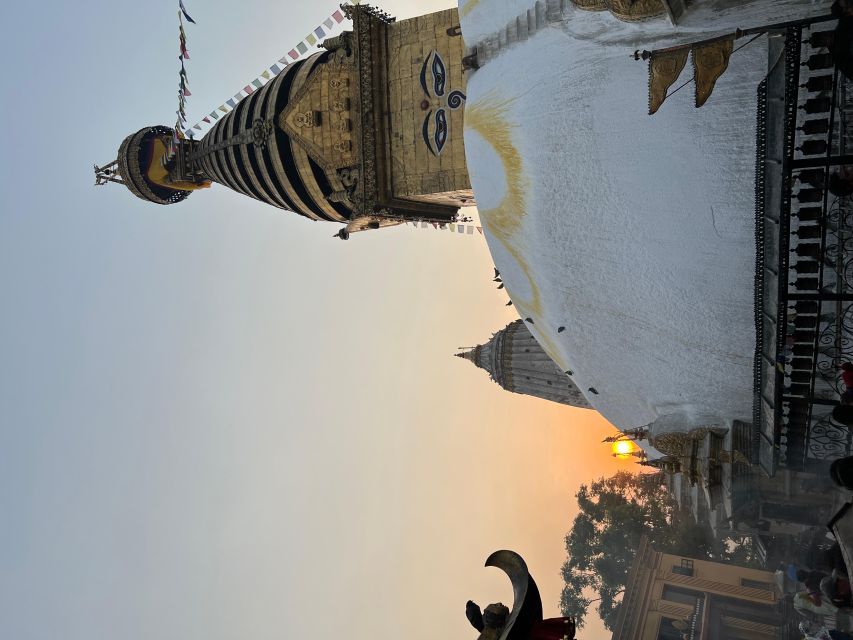
Steeped in history and culture, Kathmandu serves as a vibrant testament to the confluence of ancient traditions and modern influences that have shaped Nepal’s capital over centuries.
Travelers often find themselves enchanted by the city’s rich tapestry of events, from the rise of the Licchavi dynasty to the bustling trade routes of the Malla period.
One local guide fondly recalls showing visitors around the narrow streets, sharing stories of the Newari people whose craftsmanship still dazzles.
The blend of Hindu and Buddhist practices creates a unique atmosphere, where festivals pulse with life and ancient rituals remain a part of daily existence.
Here, every brick and alleyway tells a story, making Kathmandu not just a destination, but a living chronicle of Nepal’s vibrant heritage.
You can also read our reviews of more tours and experiences in Bhaktapur.
UNESCO World Heritage Sites
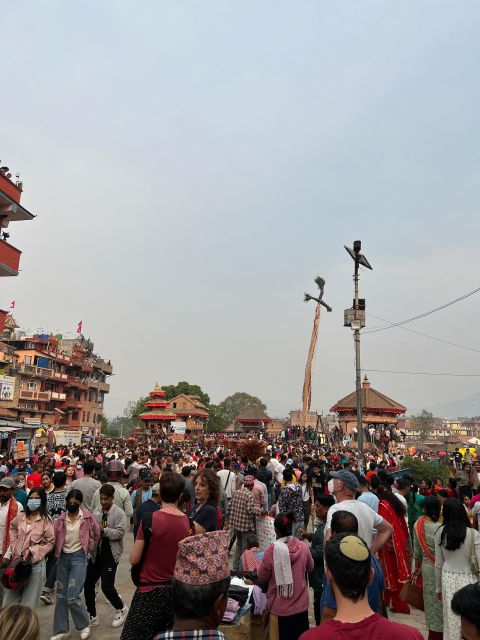
Kathmandu’s UNESCO World Heritage Sites are a captivating blend of history, architecture, and spirituality that draw visitors from around the globe. Each site tells a unique story, like the majestic Swayambhunath Temple, where monkeys play among ancient relics.
Tourists often share how they feel a profound connection to the past while wandering through Patan Durbar Square, admiring the intricate carvings and bustling atmosphere. The serene Boudhanath Stupa, with its towering structure and vibrant Tibetan culture, leaves many in awe.
Visitors can’t help but capture the beauty of Bhaktapur Durbar Square, where medieval architecture transports them to another time. These sites not only showcase Nepal’s rich heritage but also invite travelers to reflect on their own journeys.
Exploring Kathmandu Durbar Square
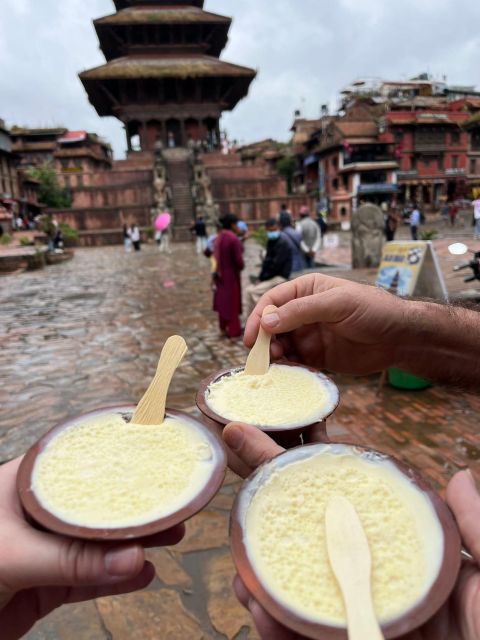
Visitors often find themselves mesmerized by the intricate details and vibrant history that fill every corner of Kathmandu Durbar Square. This UNESCO World Heritage Site offers a stunning glimpse into Nepal’s rich culture and artistry.
As they stroll through the square, they can’t help but admire the magnificent Hanuman Dhoka Palace, the intricately carved temples like Taleju Temple, the lively atmosphere filled with local artisans, and the iconic Kumari Ghar, home to the living goddess.
Travelers often share tales of watching the sunset cast a golden hue on the ancient structures. With every step, they uncover stories of a bygone era, feeling the pulse of Kathmandu’s heritage in each ornate detail.
Culinary Delights of the City
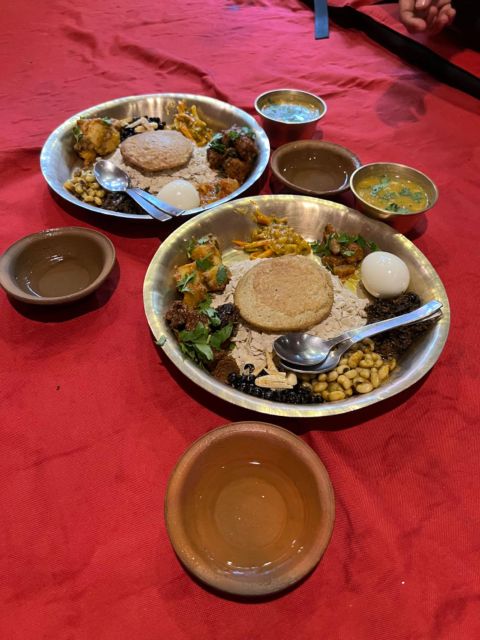
Exploring the culinary scene in Kathmandu reveals a vibrant tapestry of flavors and dishes that capture the essence of Nepalese culture.
Visitors often find themselves drawn to momos, the beloved dumplings that come stuffed with everything from spiced meat to fresh vegetables. Street vendors serve them hot, often accompanied by a tangy dipping sauce.
Juju Dhau, or king yogurt, offers a rich, creamy treat that’s a must-try for any food lover. Samosas and pani puri add to the delightful mix, showcasing the city’s diverse influences.
Travelers often share stories of enjoying these dishes while mingling with locals, creating unforgettable memories over shared meals. Each bite tells a story, making Kathmandu’s culinary delights an essential part of the city’s charm.
More Great Tours NearbyCultural Experiences to Embrace
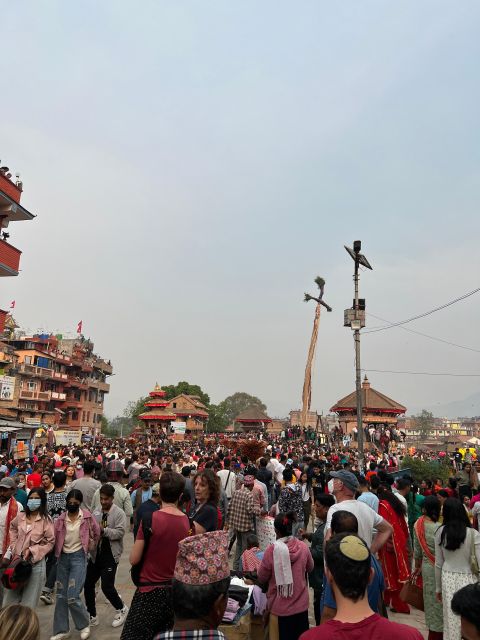
Immersing oneself in the rich tapestry of cultural experiences in Kathmandu reveals a world where ancient traditions and vibrant festivals come alive. Visitors often find themselves enchanted by the city’s unique blend of history and spirituality.
To fully embrace this cultural journey, they should consider:
-
Participating in the lively Indra Jatra festival, celebrating the goddess of rain.
-
Joining a traditional dance performance that showcases local art.
-
Exploring the bustling Thamel district for handicrafts and souvenirs.
-
Visiting local temples to witness daily rituals and ceremonies.
Each experience not only deepens their understanding of Kathmandu’s heritage but also creates lasting memories.
With every corner of the city pulsing with life, travelers can’t help but feel connected to its rich cultural narrative.
Practical Travel Tips
Navigating the vibrant streets of Kathmandu can be both thrilling and overwhelming, so having a few practical travel tips in mind will make the experience smoother and more enjoyable. Travelers often appreciate these handy pointers:
| Tip | Details |
|---|---|
| Stay Hydrated | Drink plenty of bottled water. |
| Dress Appropriately | Wear comfortable shoes for walking. |
| Cash is King | Keep small bills for local shops. |
| Respect Local Customs | Always ask before taking photos. |
| Bargain Wisely | Haggling is common in markets. |
A traveler once shared that having cash on hand helped them snag delightful bargains at Thamel’s bustling markets. With these tips, exploring Kathmandu becomes a delightful and stress-free adventure!
Local Festivals and Celebrations
Kathmandu’s vibrant atmosphere comes alive even more during its local festivals and celebrations, where the streets buzz with colorful processions, traditional music, and the joyful spirit of the community.
Residents and visitors alike enjoy the festivities, experiencing the rich tapestry of culture that defines the city.
-
Dashain: A major Hindu festival celebrating the victory of good over evil.
-
Tihar: A five-day festival of lights, honoring animals and the goddess Laxmi.
-
Indra Jatra: A vibrant celebration featuring chariot processions and traditional dances.
-
Holi: The festival of colors, where everyone joins in playful exuberance.
These events not only showcase Kathmandu’s heritage but also create lasting memories for those who participate.
Sustainable Tourism Practices
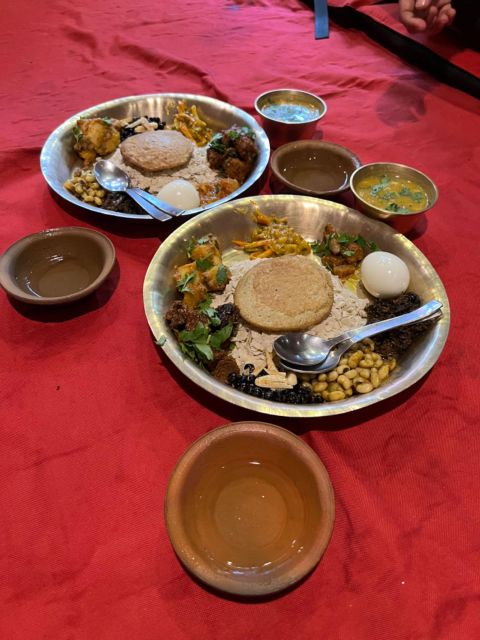
Many travelers today are seeking ways to engage in sustainable tourism practices that not only respect local cultures but also help preserve the stunning heritage of Kathmandu.
They choose eco-friendly accommodations, support local artisans, and participate in community-based tours, enriching their experiences while giving back.
For instance, visitors might join a cooking class with local families, learning to make traditional dishes like momos while fostering cultural exchange.
On top of that, they often focus on minimizing waste by using reusable bags and bottles.
This conscious approach not only enhances their journey but also contributes to the preservation of Kathmandu’s environment and culture.
Frequently Asked Questions
What Is the Best Time to Visit Kathmandu for Cultural Experiences?
The best time for cultural experiences in Kathmandu’s spring and autumn months. During these seasons, the weather’s pleasant, festivals abound, and visitors often share stories about vibrant traditions, making every moment unforgettable.
Are There Any Dress Codes for Visiting Temples in Kathmandu?
When visiting temples in Kathmandu, visitors should dress modestly. They’re expected to cover shoulders and knees. Locals often suggest wearing long skirts or pants, and it’s a respectful way to engage with the culture.
How Can I Get Around Kathmandu Besides the Tour?
To get around Kathmandu, she recommends using taxis, ride-hailing apps, or local buses. Biking’s also popular, and walking lets travelers explore hidden gems. Just be prepared for the bustling streets and vibrant atmosphere!
Is It Safe to Drink Tap Water in Kathmandu?
He found that drinking tap water in Kathmandu isn’t safe. Locals often recommend bottled or boiled water instead. She learned this the hard way, experiencing a bout of illness after trying it.
What Currency Is Used in Kathmandu, and Can I Use Credit Cards?
In Kathmandu, the currency’s Nepalese Rupee, and most places accept credit cards. However, local markets prefer cash. Travelers often find it helpful to carry small denominations for street vendors and tips during their adventures.
Recap
To sum it up, Kathmandu’s charm lies in its rich tapestry of history, culture, and community.
Whether wandering through the intricate streets of Durbar Square, savoring delectable Newari dishes, or participating in vibrant local festivals, visitors can’t help but feel a deep connection to this remarkable city.
Embracing sustainable tourism practices ensures that Kathmandu’s beauty and heritage will be preserved for future generations.
So, pack your bags and get ready to experience all the wonders Kathmandu has to offer!
You can check availability for your dates here:More Tour Reviews in Bhaktapur
- Bhaktapur: Durbar Square and Pottery Making Guided Tour
- Kathmandu: 3 days Chispani Nagarkot Trek
- From Kathmandu: Nagarkot to Changunarayan Day Hike
- Bhaktapur and Changunarayan: UNESCO Heritage Sites Tour
- Kathmandu: Nagarkot Sunrise and Hike Day Tour
- Bhaktapur: Pottery and Craft Tour with Hands-On Experience
Not for you? Here's more nearby things to do in Bhaktapur we have reviewed
- Bhaktapur: Durbar Square and Pottery Making Guided Tour
- Kathmandu: 3 days Chispani Nagarkot Trek
- Bhaktapur and Changunarayan: UNESCO Heritage Sites Tour
- Kathmandu: Nagarkot Sunrise and Hike Day Tour
- Bhaktapur: Pottery and Craft Tour with Hands-On Experience
- Kathmandu: 7 UNESCO Heritage Site Private Tour
- 2-Days Nagarkot Homestay Tour Including Day Hiking
- 25 Best Tours In Bhaktapur
- 3 Best Guided Tours In Bhaktapur
- 7 Best Private Tours In Bhaktapur
- 19 Best Treks And Hiking Tours In Bhaktapur
- 7 Best Private Drivers In Bhaktapur
